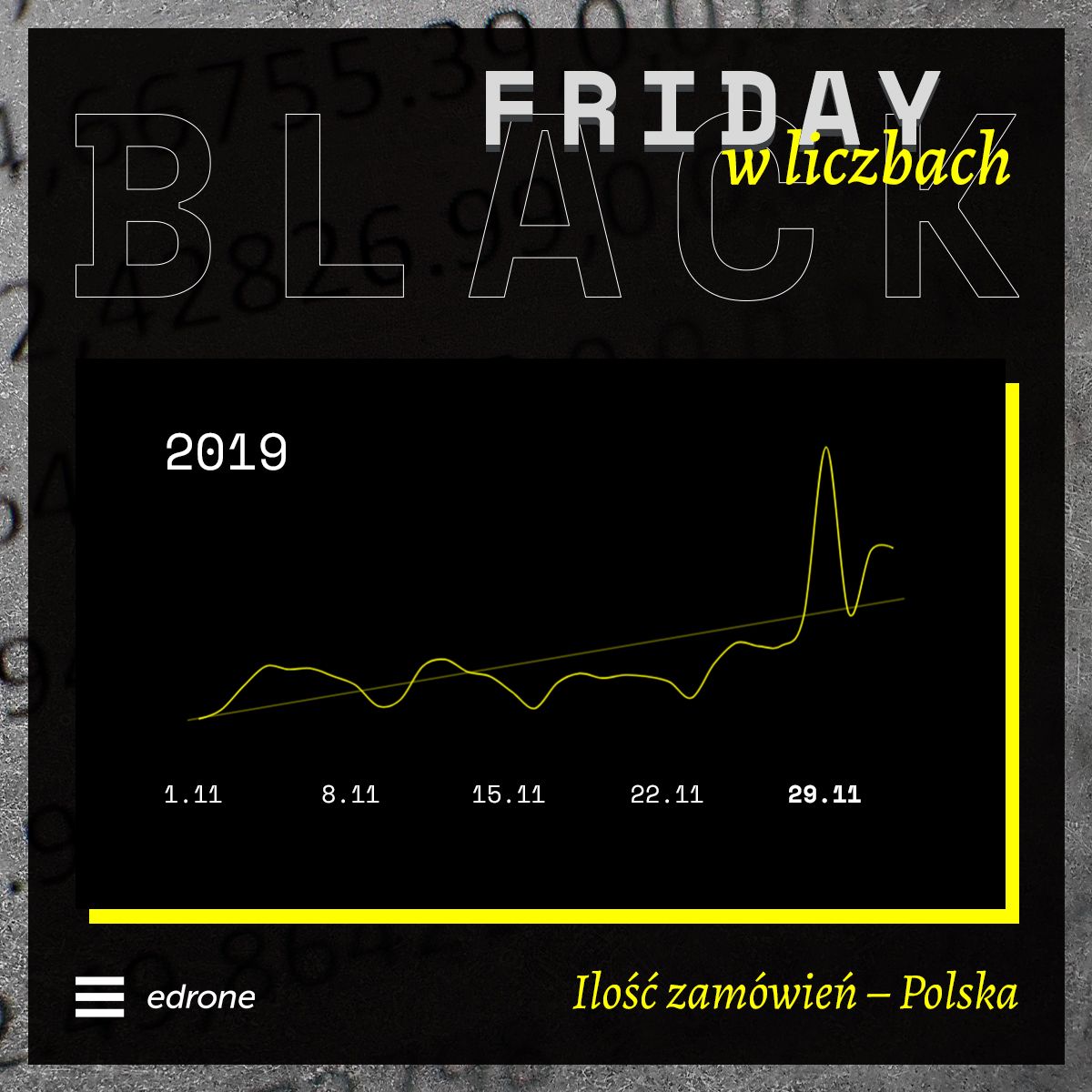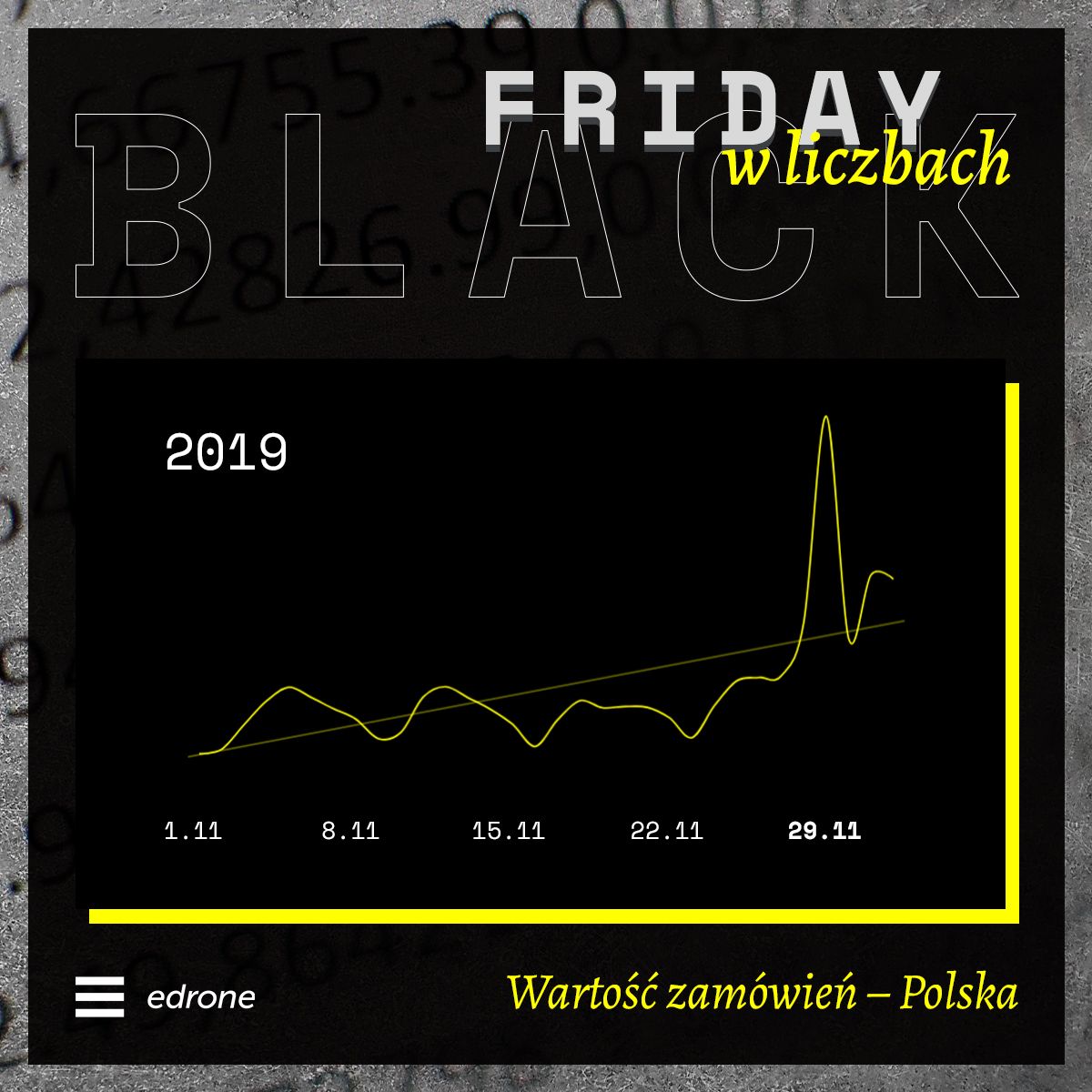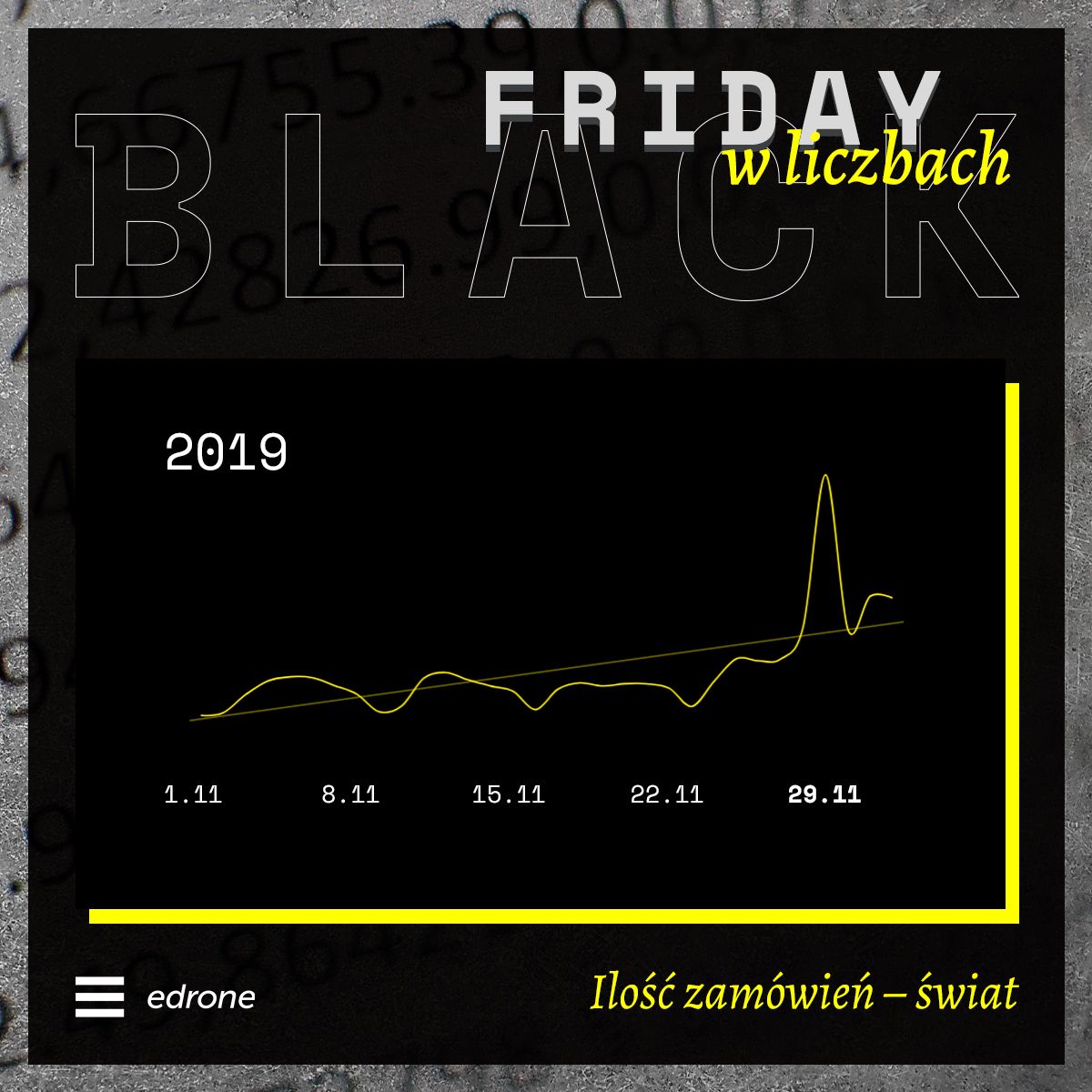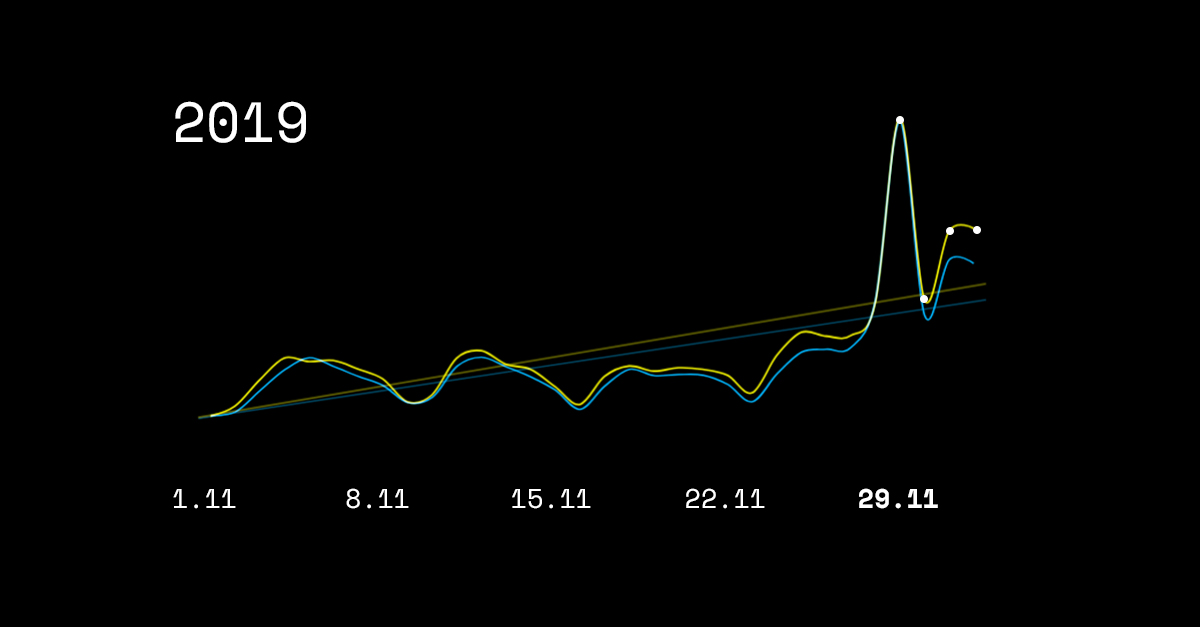Table of contents
Do you want to increase sales and build even better relationships with your customers?
Another Black Week is in the books, but the emotions are still flying high. Some of the stores have extended their promotions until the end of this week, nonetheless, we can already analyze the results of shopping event of this year.
The presented stats are based on data coming from our customers. So was the Black Friday 2019 another record, or not? As marketers, we are obliged to say: it depends! 😉 On what? Let’s set up some basics first:
- Every opened and active shop has a chance to notice significant income during this black season thanks to sheep’s shoot effect. Clients are already white-hot leads – opened for purchase. The decision process is a way shorter, yet a bit different than usual…
- We can talk about Black Friday Sell’s success when the income is about ten times higher than during the regular season. We have used October as a referral period.
- We assessed Black Friday sales taking into account also estimations and expectations of entrepreneurs.
The United States celebrates Black Friday since the early 50′, yet in Poland, it’s still comparatively something new („Black Friday” as an actual marketing initiative appeared circa 2014). The tradition is slowly infiltrating into local commerce, and the amount of businesses taking part in holiday is increasing along with revenue and indicators on November’s sales reports.
Actually – it was growing because this one was a bit different. Let’s take a look at Google Trends reports first.
Google Trends: Black Friday (Poland)

What brilliant conclusion can we extract from it? Not much, yet. Polish society is well acknowledged with the term “Black Friday” nowadays, and there is no need to google it, so let’s be more precise. As an example, I’m going to buy some discounted electronics…

…Shoes then…

Ok. Maybe something more specific. Huawei?

Does lowering interest in phrases connected with Black Friday Sales stands in opposite to what we wrote a few lines above? That Black friday is getting more and more popular in poland? Well, not, because analog phrases for e.x. United States are barely identical. Let’s focus on solid data, which better describe Black Friday 2019.
Sales indicators
In 2019, the average increase in turnover among online stores (global) was 241.19%, which is a slight decrease compared to the result of 254.17% in 2018.
Sales boost – worldwide
- 2019 — 241.19%
- 2018 — 254.17%
- 2017 — 239.17%
- 2016 — 224.17%
If we take into account the fact that not all stores took part in the sale, the increase compared to the day of regular sales was – 389.14%. The assessment criterion was a significant increase in sales, indicating active participation in the action.
The average value of orders in Polish stores was 438.09 PLN. In this category, we’ve noted an increase compared to the last year.
Avarge Order Value – Poland
- 2019 — 438,09 zł
- 2018 — 426,20 zł
- 2017 — 375,87 zł
- 2016 — 280,19 zł
The best results were recorded by online stores, which focused primarily on building long-term relationships. The best response for it is personalized communication — depending on the place at the RFM grid where you can find the client. Stores that have implemented advanced behavioral segmentation (RFM) a more significant boost:
- RFM — 312,92%
- Without RFM — 235,35%
Interestingly, the Brazilian consumer spent an average of 160.09% money more on an individual order in a single store on Black Weekend.
- Poland — 102,13 EUR
- Brasil — 265,64 EUR
- UK — 143,09 EUR
Artificial intelligence also have had an impact on sales results. Stores that use AI to recommend promotions to the customers based on behavioral data can boast of significant increases – they have noticed an increase of almost 53 percentage points more than those that opted for static exposure.
- AI — 283,25%
- Without AI — 230,91%
Record holders among edrone customers have noted a turnover increase of up to 3000%.
The graphs below show the course of a few parameters throughout the whole of November, day-by-day.




Value and amount of orders – comparison. Yellow: Amount; Blue: Value
1. Economic slowdown at the gates?
As we mentioned above – Black Friday is taking place in Poland since 2013. There is some similarity between it and the steady rise of the economic situation. Clients were buying goods eagerly, and every other year was better than the previous one. Up to 2018, when the good run ended. At the same time, polish society is still wealthy. What happened then?
There are numerous factors. As we want to focus on Black Friday, we will focus on only one – rising maturity of customers.
2. Rising maturity of the customers
As consumers, we are more aware of almost everything. From price manipulation (described widely below) to impact that our shopping choices have on the environment. The last one is particularly important in this paragraph. Zero-waste, sustainable development, plastic use reduction. These movements are affecting our lives more and more, and especially – whole commerce.
Time is passing by, and younger generations are becoming more and more significant buyers group, making retailers to adapt, according to gen Y expectations. At the same time – Millennials declared that they would spend 2.5 times less on Black Friday.
3. Black Friday Withdraw?
Many shops decided not to take part in Black Friday. Some of them directly informed about it to their customers. A few of them went even further – they increased prices in the form of protest. What’s more — lots of companies in their communications ware highlighting issues related to consumerism. We’ve noticed hundreds of campaigns encouraging to repairing the goods instead of replacing it with new ones, rethinking purchases, or only showing how much products are wasted worldwide.
4. Communication noise
As we said earlier, numerous shops decided to not taking part in Black Friday sales, but the rest was more than active. One of the reasons lower sales at this time could be early advertisement exposure – brands have promoted BF since early November. To be precise – there is nothing wrong about the start of the BF campaigns, but it has to be aimed at building the relationship first rather than aggressive discounts presentation.
It’s evident that discounts are the leading theme of this time, and to distinguish itself, shops need to be more original. Once again – shops that chosen to build-up long-term relationships with their customers noticed sales increase 77,57 percent points higher than the ones who don’t.
5. Were the prices actually exciting?
Well… not really. Everyone likes discounts, and almost always, a small cut can boost sales, but not on Black Friday. It’s a very particular time, and some of the eShops seemed to forget about it. Let’s be honest – 10% of depletion isn’t something thrilling at the regular season. Of course – many shops could show off more significant discounts, but sadly, the majority of them were just virtual discounts due to slow but constant prices highering since early September.
That tactic isn’t something new, and sadly – usually it works, but, again – not this time. Along with the growing popularity of BF, a modern customer, it’s “customer intelligence” grows as well. This year pages like fakefriday.com unmasking tricky practice (virtual discounts) was visited by probably everyone who was going to hunt occasions.
Shops before prices
How modern customer looks nowadays then? What should we keep on mind right before the holiday season frenzy? Let’s see what marketing specialists we asked have to tell about it.
Marcin Lewek — Content Designer
The analysis above clearly shows us a new kind of customer.
It’s the client witch aware of its own decisions and deals almost exclusively with the trusted shops that are reflecting it’s values and views.
He is open-minded, and also willing to change it’s shopping preferences ad hoc, but you will need more than usual to grab his attention for longer, and even more to convert him as your loyalist.
Neo-customer value the whole shopping experience. Emotions during purchase, and months after it, including feelings from a broader perspective. The fact of owning the item is not so important anymore, and it’s replaced by the impact on the environment or other ethical-nature factors.
The picture above is obviously exaggerated and doesn’t represent the whole spectrum of clients of the modern era. Yet, it’s an excellent place to start if you’re going to plan a long-distance strategy. Also, a chance for quick adjustments in the present one, although the Holiday season is really close!
Jakub Papuga — Business Analyst & Paid Ads Specialist
Ads stakes as usually during Black Friday boosted up drastically – on average of 2 to 3 times than usual. Still, it wasn’t something unnatural, since Google Ads popularity is continuously growing.
However, what is upbuilding, that the higher stakes are going hand by hand with the growing engagement of customer care of tech giants. Almost all the issues were solved instantly, and ads validation was quicker than usual.
What’s more, users are aware of the battle for them and are willing to seize the opportunity. At the same time, catching them on baits of discounts, even tempting at first glance, isn’t that effective as it was in the past. It’s the reason why brands that build their strategies on cuts failed.

Paweł Borowik — CEO @ iCEA
Users are nowadays much more demanding, in contrast to the past. They are less vulnerable on manipulation, like artificial discounts – especially „popular” in the electronics branch. Users are monitoring prices and are aware when they’re seizing the opportunity, or not. E-shops are often lacking perspective thinking and reacting to the crisis too late, so they’re made to face the whole consequences of their neglect.
Google search algorithm, while ranking search results, is starting to taking into account behavioral factors seriously. It didn’t came out of nowhere, simply because the page that is loading in the nick of time, intuitive, full of high-quality images, represents the higher value for the user than the one with overbuilt category description.
Short-term thinking manifests itself also in a lack of modern marketing automatization systems, neglecting technical issues, such as proper server optimization, UX, etc. All above worsens SEO, and in the outcome, worsens sales. In the future, this correlation will be even more significant.
During Black Week, Black Friday, Black Weekend we can observe the same problem. No properly prepared plan, lack of perspective, valuable content, and proper communication is a huge mistake. Just like popular opinion, that all you need at Black Friday is stockpile of discounted items – not today, not anymore.
If the user lands on your website and due to heavy traffic, a page is working slowly, laking of photos and proper descriptions, and UI is intricate, high cuts won’t help. The website has to be competitive. It has to meet the highest expectations of picky users „spoiled” by your competition. Black Friday is a perfect time to boost your sales, but without proper tactics and strategy, you will increase only your traffic and nothing more.
Jakub Papuga
Man with two faces. PPC Specialist & Business Analyst. Huge experience in Social Media Marketing and Google Ads. Fascinated by TechMarketing and Neuromarketing enthusiast.
Do you want to increase sales and build even better relationships with your customers?